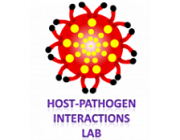Citation:
Aaron Brahami, Levy, Hadas , Zlotkin-Rivkin, Efrat , Melamed-Book, Naomi , Tal, Nataly , Lev, Dmitry , Yeshua, Talia , Fedosyeyev, Oleg , Aroeti, Benjamin , and Lewis, Aaron . 2017.
“Live Cell Near-Field Optical Imaging And Voltage Sensing With Ultrasensitive Force Control”. Opt Express, 25, 11, Pp. 12131-12143. doi:10.1364/OE.25.012131.
Publisher's VersionAbstract:
Force controlled optical imaging of membranes of living cells is demonstrated. Such imaging has been extended to image membrane potential changes to demonstrate that live cell imaging has been achieved. To accomplish this advance, limitations inherent in atomic force microscopy (AFM) since its inception in 1986 [G. Binnig, C. F. Quate, and C. Gerber, "Atomic Force Microscope," Phys. Rev. Lett. 56, 930-933 (1986).] had to be overcome. The advances allow for live cell imaging of a whole genre of functional biological imaging with stiff (1-10N/m) scanned probe imaging cantilevers. Even topographic imaging of fine cell protrusions, such as microvilli, has been accomplished with such cantilevers. Similar topographic imaging has only recently been demonstrated with the standard soft (0.05N/m) cantilevers that are generally required for live cell imaging. The progress reported here demonstrates both ultrasensitive AFM (~100pN), capable of topographic imaging of even microvilli protruding from cell membranes and new functional applications that should have a significant impact on optical and other approaches in biological imaging of living systems and ultrasoft materials.
